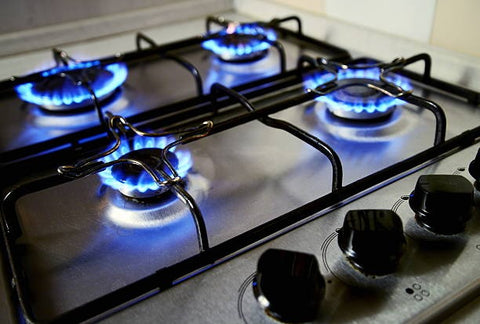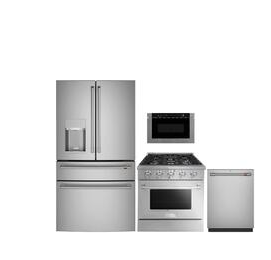Gas vs. Electric Stoves: Which is the Best Choice?

The time has come to renovate the kitchen and you face the usual question: gas or electric? As we know that it is a very important decision for your home, in this article, we will tell you the advantages and disadvantages of each of them so that you can choose the kitchen that is right for your needs.
What type of kitchen to choose for your home?

Currently, several types of cookers are suitable for particular needs and tastes, from liquefied gas (LPG) or natural gas (NG) cookers to electric induction cookers or ceramic hobs. For this reason, in this buying guide, we tell you everything you need to know to choose the right option for your home.
Gas stoves

Gas stoves are definitely cheaper than electric ones. Still, before deciding on them, you should consider if you have the space available at home, since most models come with an oven built into a metal structure. However, you can also find some models recessed that are installed on flat surfaces to optimize space.
On the other hand, you must also take into account the type of fuel you are going to use. This factor is important at the time of choosing, and you should consult the seller if the kitchen works with LPG, NG, or both.
Advantages of gas stoves

They are cheaper. This is one of the main advantages that gas stoves have over electric ones. If you are looking for a device that consumes less energy and allows you to save, this is the perfect option for you.
Heat your food instantly. Unlike electric stoves that take time to concentrate a large amount of energy and generate heat, you only need to turn the knob with gas stoves.
You can cook on different materials. Gas stoves give you the possibility of using pots, pans, or kettles made of stainless steel, iron, clay, or ceramic, among other materials.
Provides more stable cooking. Gas stoves maintain a constant temperature during cooking, which gives our food a special taste.
Disadvantages of gas stoves

Need more maintenance. Due to the material used by gas cookers, such as steel or iron, they are more prone to rust, so constant maintenance of their parts is necessary.
They require a more demanding cleaning. Unlike ceramic or induction stoves with a flat surface, you have to clean the burners, grills, and other parts on gas stoves.
They take up more space. Gas stoves usually have an oven built into a metal structure, in addition, those that use LPG require a separate space to locate the gas balloon.
There is a risk of a gas leak. When using a flammable and gaseous resource, there is a risk of a gas leak due to a bad connection or improper handling of the cooker.
Electric stoves

Electric kitchens are usually built-in or countertops, which make them more practical to optimize spaces. Although there are also standing models. They also differ from each other by the method they use to generate heat, which can be through a ceramic hob or by induction.
It should be remembered that these types of kitchens have a high electricity consumption, which is why they generate a higher cost than that of gas kitchens. However, they have other advantages that we will explain below.
• Vitroceramic kitchens
Ceramic hobs use electric resistances under a glass platform to generate heat. Once the entire surface is hot, we can place the containers such as pots or pans to cook the food.
• Induction cookers
Induction cookers heat up faster than ceramic hobs, this is because they use electromagnetic plates that generate heat directly in focused areas and not on the entire surface as in those mentioned above.
Advantages of electric stoves

Install easily. Electric induction or glass-ceramic cookers are usually installed on flat surfaces, which allows excellent space optimization.
They are easy to clean. Induction or ceramic hobs have a non-stick glass platform that requires very simple cleaning.
They are safer. Induction or glass-ceramic cookers, being electric, do not risk gas leakage, making them safer. In addition, it can be programmed to turn off at a certain time.
Optimize spaces. Induction or ceramic hobs are mostly built-in or countertop models that take up little space and are ideal for optimizing space.
Disadvantages of electric stoves

Requires specialized maintenance. When working with electromagnetism, Electric induction cookers need a special battery that must be renewed periodically.
Takes time to cool down. When the burners of the vitroceramic kitchens are turned off, they conserve the residual heat of the resistance, so it is necessary to remove the containers so as not to cook your food any more. Also, be careful not to burn yourself on the surface.
Generate higher spending. Electric stoves consume more energy than gas ones, which generates a higher monthly expense in household utility bills.
Takes time to heat up. Vitroceramic stoves use electrical resistance to concentrate the adequate heat to cook food, this is a disadvantage compared to gas stoves that heat instantly with their flame.










